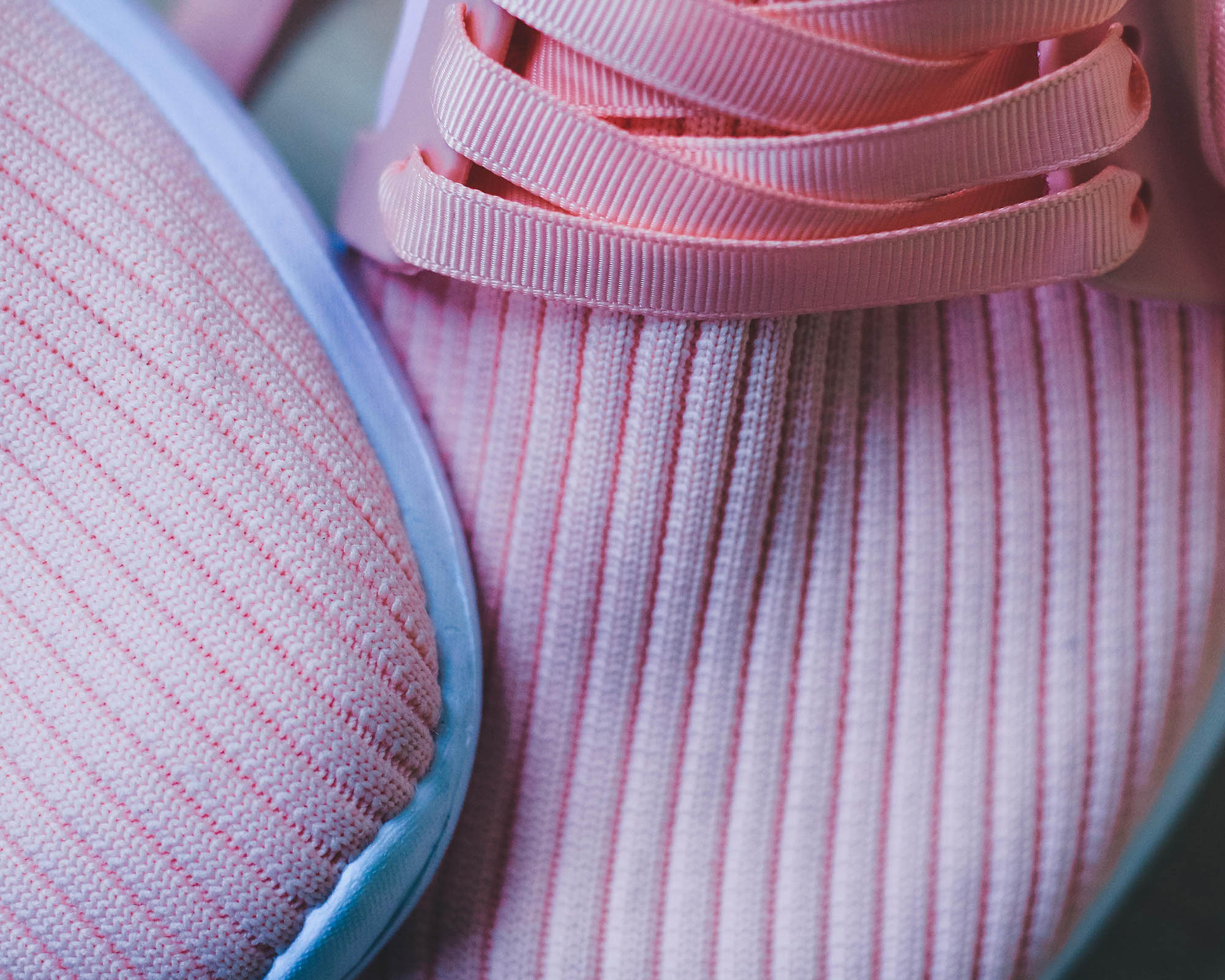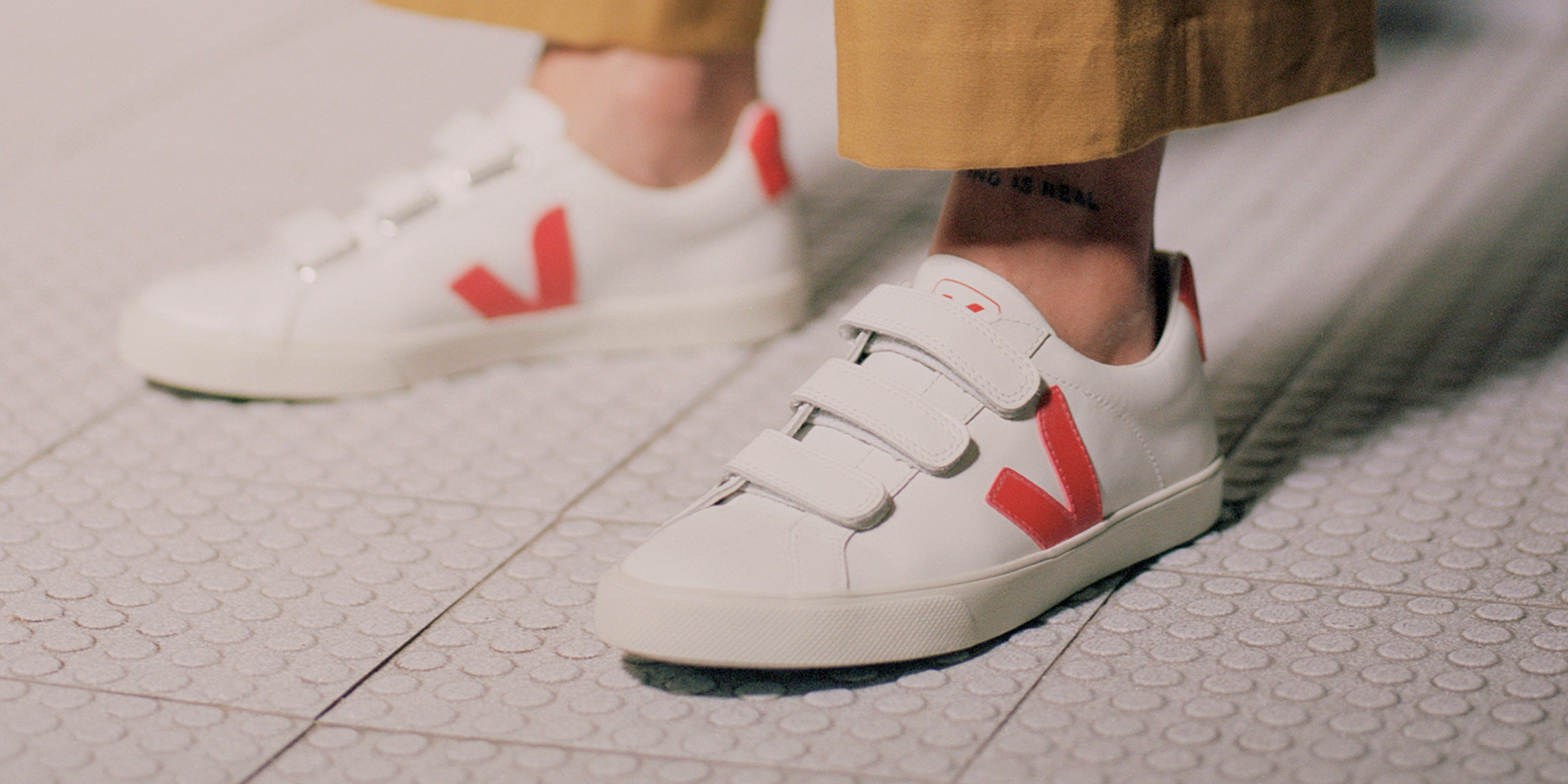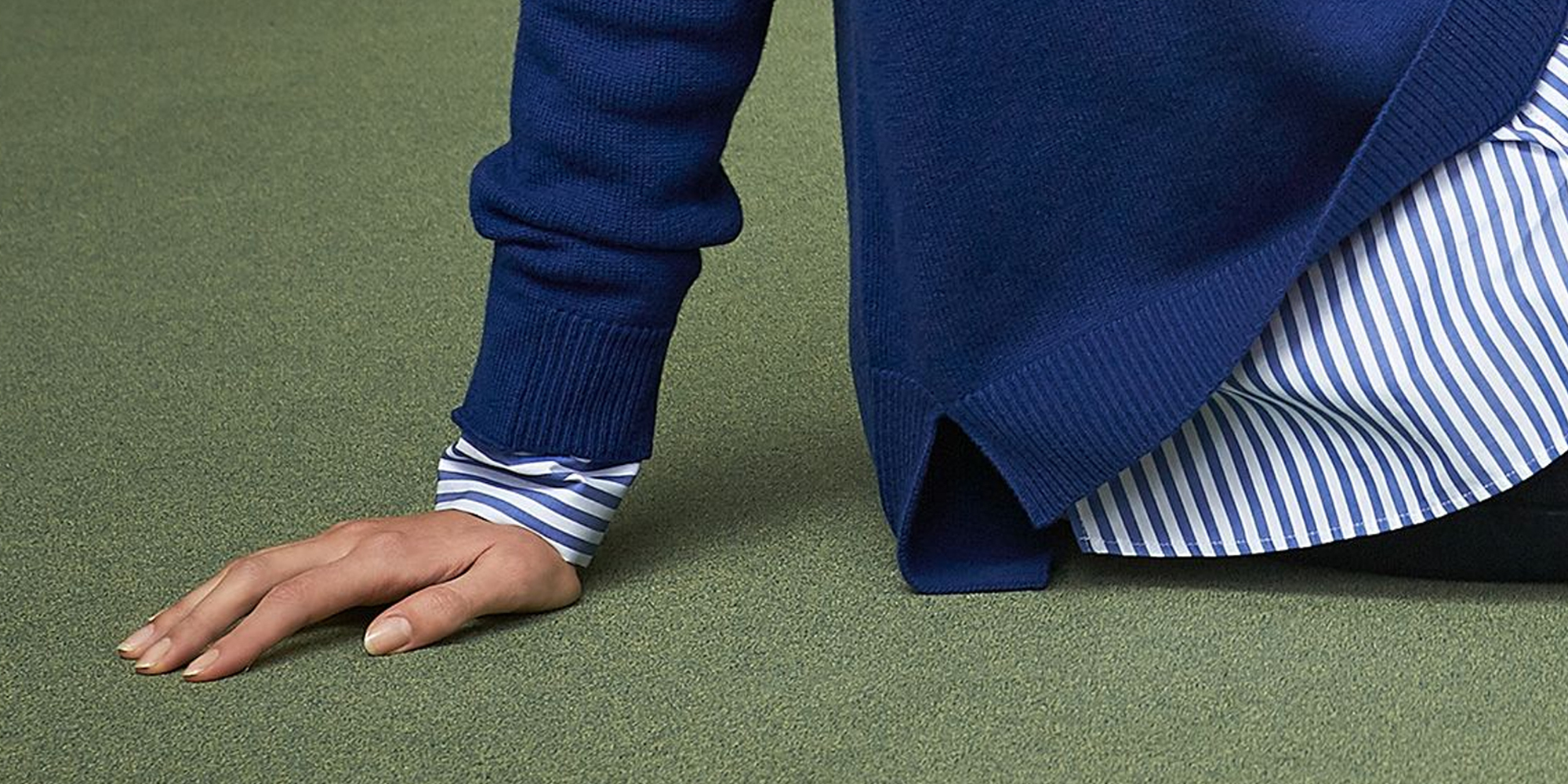If you’re concerned about the environmental impact of fashion, then you likely analyse garment tags to find out what your clothes are made of, and it doesn’t take a magnifying glass to notice the fabric that comes up more than most: polyester. Here, we investigate and answer the questions: what is polyester exactly, and can it ever be sustainable?
When was polyester created?
Polyester fabric hasn’t been around forever. Our great-grandparents were clothed in plant- and animal-based materials such as wool, linen, and cotton. By the end of World World II, the latter accounted for over 80% of fibre consumed.
Chemical advances in the 1940s introduced artificial fibres, and so began a gradual shift away from cotton, turning towards cheaper and faster textile production methods. Nowadays, polyester dominates the clothing industry. According to the Textile Exchange Material Market Report 2023, polyester production volumes increased from 61m tonnes in 2021 to 63m tonnes in 2022. Polyester continues to be the most widely produced fibre, making up a staggering 54% of the global market in 2022.
So what exactly is polyester?
The term “polyester” describes a category of polymers produced by mixing ethylene glycol (derived from petroleum) and terephthalic acid.

Chemical jargon aside, polyester is a common plastic with a wide range of applications extending beyond the fashion industry.
It ranks third behind polyethylene (packaging and water bottles) and polypropylene (ropes, stationary, and modern banknotes) as the most commonly used plastic. In this article, we’re focussing on PET polyester, which is the most commonly used in fashion.
Polyester is not biodegradable
Conventional polyester is not biodegradable, meaning that polyester fabric shirt you bought last season will not decompose for 20 years at best and 200 years at worst.
Despite innovations in the space, polyester fibres as a whole are still not reliably biodegradable outside of a lab setting, and we don’t consider any form of it to be a lower-impact material at this stage.
What’s more, polyester is partially derived from petroleum, and the oil manufacturing industry is the world’s largest pollutant and a key driver of climate change.
Polyester dyes are not lower-impact
Polyester dyes, known as disperse dyes, are insoluble in water. Like polyester, they have a complex molecular structure that doesn’t readily decompose.
Wastewater from textile factories containing leftover dye is difficult to treat, and when it enters the environment, its toxicity causes serious problems to local plant and animal life.
In addition to causing environmental problems, disperse dyes are toxic to humans. Dye workers worldwide report higher incidences of cancers and lung disease than the general population.
Polyester manufacturing is water-thirsty
Polyester is created through an energy-intensive heating process and requires large quantities of water for cooling. If not managed properly, this can result in groundwater levels dropping and a local reduction in access to clean drinking water—particularly in vulnerable communities where polyester is often manufactured.
What about recycled polyester?
Recycled textiles’ market share slightly decreased from around 8.5% in 2021 to 7.9% in 2022, according to the Textile Exchange Material Market Report 2023, and less than 1% of the global fibre market was from pre- and post- consumer recycled textiles in the same year, meaning that textile-to-textile recycling is seriously lagging behind.
In the past few years, the sustainable fashion sphere has been introduced to recycled polyester fibres, which have been touted as a “more sustainable” replacement for virgin polyester fabrics. Recycled PET plastic is usually made from recycled plastic bottles, and while it sounds like a good solution for repurposing plastic waste, it’s not so clearcut just yet. As The Guardian reported, “recycled polyester created through a mechanical process can’t be recycled again and again. This raises some concerns when fast fashion brands increasingly rely on the material. It also likely sustains demand for single-use PET bottles, not something we want to see.” The article goes on to explain that recycled polyester is often still blended with virgin polyester, “furthering the reliance on fossil fuels. And at the end of these garments’ lives, they’re still often destined for the landfill.”
Worth noting is chemical recycling—a burgeoning recycling process that breaks down polyester into its monomer components, thereby creating recycled polyester with the same properties as virgin polyester. However, this kind of recycling is still extremely limited and not likely to be picked up by major fast fashion labels any time soon.
So it’s worth keeping in mind that when fast fashion brands simply replace a small portion of their collection with recycled-PET products, it doesn’t suddenly make them a brand worth supporting, as their impact often remains hugely wasteful across the board. Not to mention that recycled polyester still sheds microplastics.
If you do purchase recycled-PET garments from better brands, be extra careful with fleeces. Studies have shown that plastic microfibres are polluting waterways at an alarming rate and that fleece made from recycled PET plastic may be more polluting than its original form.
More on those microfibres
Multiple studies have shown that synthetic fibres make up a good share of microplastics found in waters and are widely implicated as the source of pollution. It’s been suggested that more than 4,500 fibres can be released per gram of clothing per wash, according to the Plastic Soup Foundation.
Microfibres are so tiny they can easily move through sewage treatment plants. They do not biodegrade and bind with molecules from harmful chemicals found in wastewater. They are then eaten by small fishes and plankton, concentrating toxins and travelling up the food chain until they reach us. The consequences of microfibres on the human body have yet to be researched and revealed. Until then, here are our top tips on dealing with microfibres in clothing.
What can we do to dress more sustainably?
- Look for garments made from lower-impact materials, like organic cotton, hemp, linen, or TENCEL, or from reused, upcycled, and recycled materials and coloured using lower-impact dyes.
- Choose well, buy less. Even garments made with non-synthetic fibres have ethical issues. Cotton is a thirsty fabric, and the wool industry has sometimes been criticised for unethical practices. By choosing well and buying less overall, you help discourage the unsustainable overproduction of fibres, which comes at a cost to the environment and the world’s most vulnerable people and animals.
- Buy from second hand and charity shops. An even better alternative to buying fewer new things is buying more pre-loved garments from second hand stores. Since polyester garments are both common and durable, you will find plenty of options in thrift shops that show few signs of wear and tear and will stand the test of time.
- Wash less and wash better. Solutions to avoid microfibre shedding during washing are appearing, such as special laundry bags and laundry balls. You can also wash on cold, with a fuller load, and using liquid detergent to reduce shedding. And line-drying is always a better option than machine drying for the environment, your clothes, and your power bill.
- Choose brands with policies that protect and respect the planet and the people making their products. Good On You helps you uncover brands that perform better on the issues you care about. Check out the app or directory to discover brands that tick all your boxes.




















